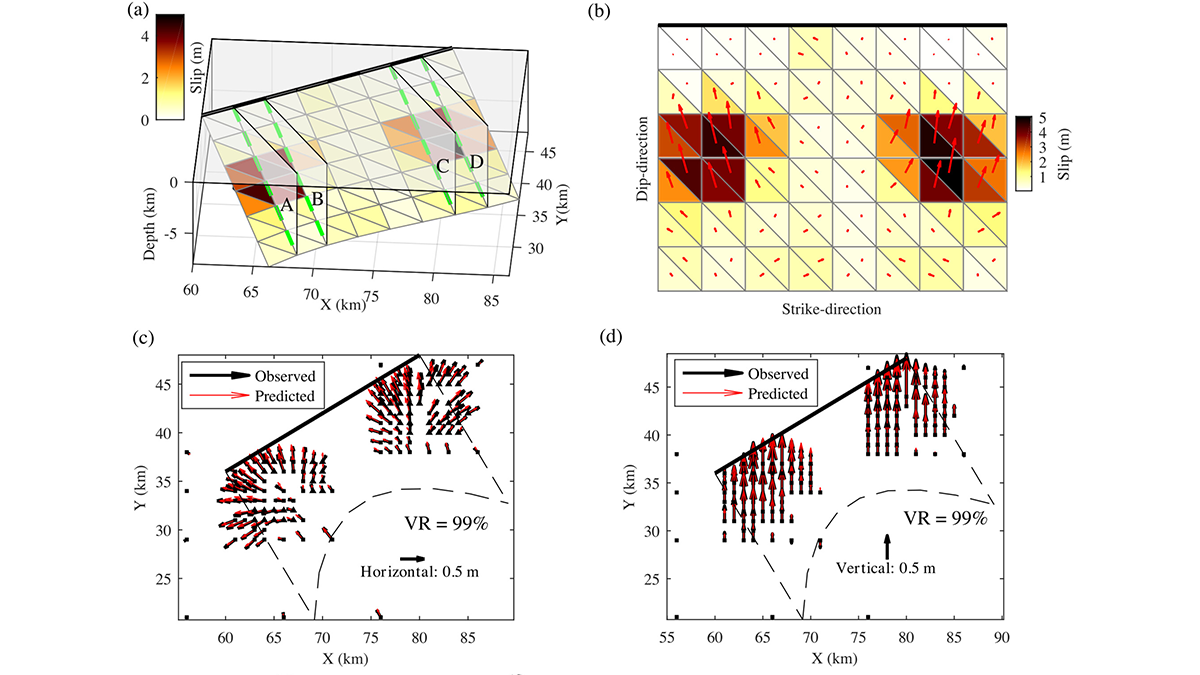Editors’ Highlights are summaries of recent papers by AGU’s journal editors.
Source: Journal of Geophysical Research: Solid Earth
Large earthquakes generally produce ground deformation that can be measured by geodetic instruments. Geophysicists can use these measurements to invert the earthquake source parameters, that is, to recover the earthquake slip on the ruptured fault. However, the conventional inversion of geodetic data does not fully resolve the geometry of the broken fault at depth.
Wei et al. [2023] developed a new Bayesian nonlinear inversion framework that succeeds to solve both the non-planar geometry of the ruptured fault and the heterogeneous earthquake slip distribution (amplitude and direction) on the fault. The method was applied to the 2013 Mw 6.5 Lushan earthquake in southwest China. Their results successfully reveal the curved geometry of the broken fault, and the complexity of the earthquake slip with both thrust and left-lateral components.
Citation: Wei, G., Chen, K., & Meng, H. (2023). Bayesian inversion of finite-fault earthquake slip model using geodetic data, solving for non-planar fault geometry, variable slip, and data weighting. Journal of Geophysical Research: Solid Earth, 128, e2022JB025225. https://doi.org/10.1029/2022JB025225
—Elisa Tinti, Associate Editor, JGR: Solid Earth

